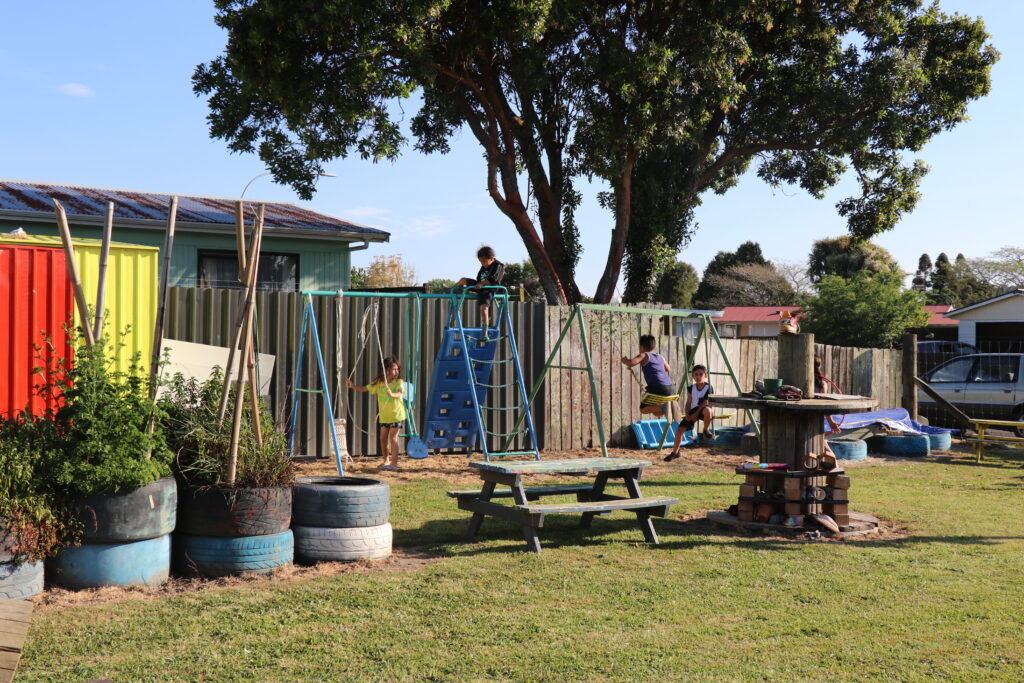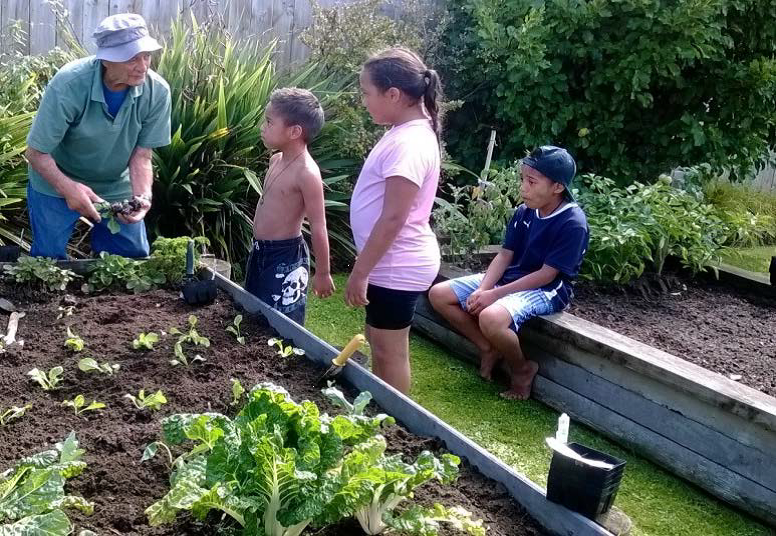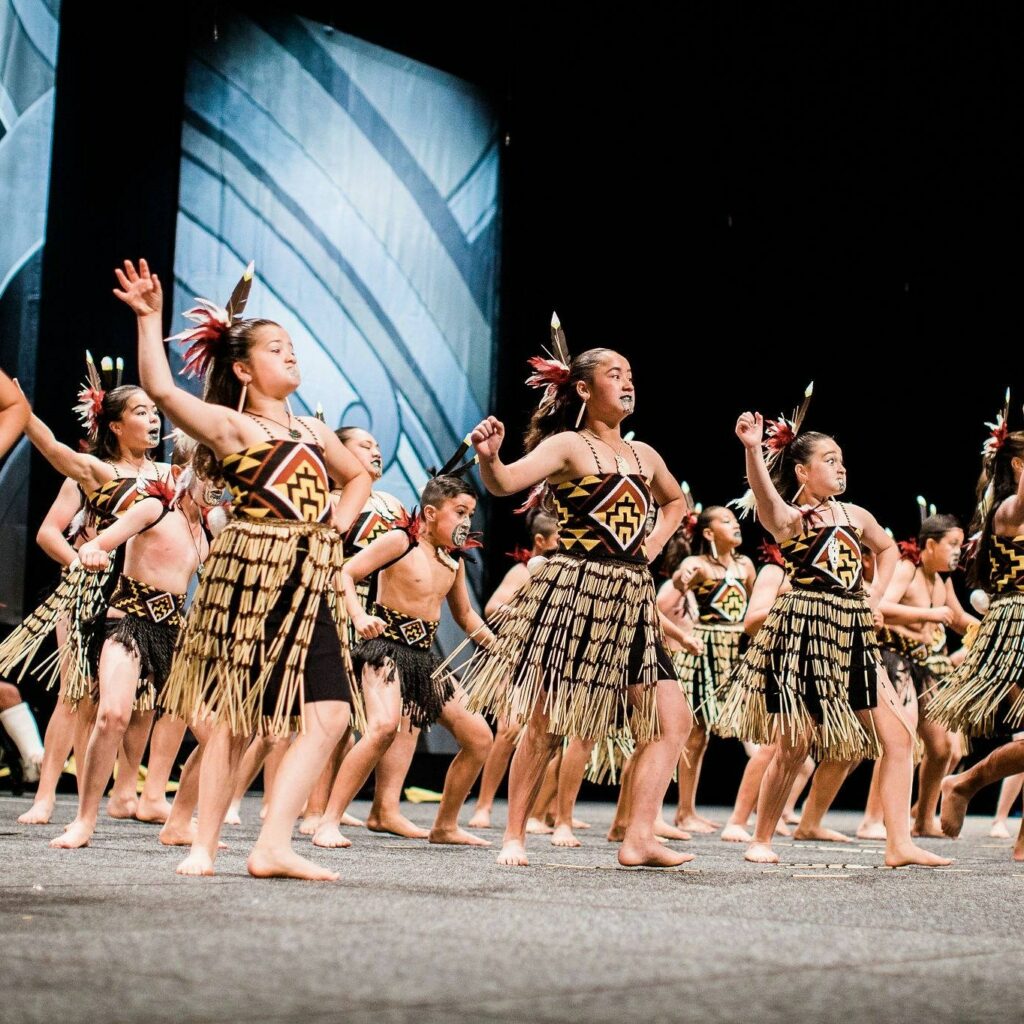
Supporting tamariki, rangatahi and whānau wellbeing through community-led development
Child Rich Communities is a collaborative project hosted by Inspiring Communities, aimed at highlighting the positive impact that place-based, community-led development can have on child, youth and family wellbeing. We believe that strong, connected communities are key to helping children and families thrive.
Kia whāngaia te rito, ka puāwaitia te harakeke.
When we nourish and foster the rito (the child), the harakeke (the whānau and community) will flourish.
Pictured right: Tamariki playing at The Hughes Place Community Garden, Taneātua, Eastern Bay of Plenty


Introducing Child Rich Communities’ Learning Cluster 2025-2026
To help to build a body of knowledge of how community-led practice can positively affect child and youth wellbeing, we will be walking alongside four community initiatives who all have a passion for positive place-based change for tamariki, rangatahi and whānau. Over the next 18 months we’ll connect with each site monthly, and come together as a whole every three months. Our collective journey gives us opportunity to deepen our understanding of child rich approaches in action, the successes, the challenges, and key learnings that shape meaningful community engagement.
This, together with our online kōrero and pānui will support all of us to gain a deeper understanding of how community development can positively alter the wellbeing of children, youth, whānau and the whole of community.
Stay connected with Child Rich Communities
We host regular online kōrero (conversations) where people can share and learn together. These are more than just webinars—they are interactive sessions that encourage collaboration and learning.

How we work
Building on insights from the 2018 Bright Spots report and learning alongside locally-led initiatives across Aotearoa, we’ve identified the following key themes, which shape our approach to improving wellbeing of tamariki and rangatahi.
Engagement
Work inclusively and without judgement. See local people as the greatest asset, not a ‘problem to be fixed’. Proactively reach out and involve families, whānau and the wider community in discussions and decision making.
Empowerment
Go beyond ‘social service delivery’, proactively work alongside local people in ways that encourage them to participate, lead, make decisions and take action themselves. Encourage people to recognise their own power and help ignite their dreams and aspirations.
Connection
Build on the positives first and be welcoming. Use soft doors (e.g. coffee groups, local events) to strengthen social connectedness and build trust. Look to link people and ideas with others who can help, explore shared visions and next steps. Seek to build community in all you do.
Collaboration
Work together with multiple stakeholders to maximise energy, impact and resources. Make sure local whānau and community leaders are authentically involved and supported to participate.
Relationship focus
Value and nurture strong, respectful, reciprocal and long- term relationships with families, whānau and the wider community.
Responsiveness
Be willing to change and adapt how things are done to enable the aspirations of local families, whānau and the wider community.
To think & work holistically
If families and whānau are well, children are well. If our whānau, families and children are well, our communities will be too.
Pictured left: Tamariki Toa, Nelson Central School, performing at Te Mana Kuratahi 2019
Our Story
In 2015, Inspiring Communities, Plunket, UNICEF and Every Child Counts joined up to promote and further explore the concept of Child Rich Communities.
In 2016, the CRC project partners launched the Bright Spots Report which showcased 21 examples of local community initiatives that are making a positive difference to children and families.
S.K.I.P funding enabled a Bright Spots national hui that brought together key community leaders to connect, share and strategise on how to grow a Child Rich Communities approach in Aotearoa.
In 2018, S.K.I.P. funded an initial Child Rich Action plan which involved a range of capacity building activities – community workshops, webinars and peer-led practice groups. This work was well received, with an evaluation of the project’s key activities demonstrating value from the approach. Unfortunately, funding to enable 2019 activities did not progress as hoped.
In 2020, a new guiding group for CRC came together to begin working out the next steps to help advance our goal to raise awareness, deepen understanding and promote the role of community-led development in child and family wellbeing.
In 2022, we were all about reconnecting with communities around the motu, and those working in the child wellbeing space. Throughout 2022-4, we hosted bi-monthly online kōrero with various child and youth focused topics, hosted regional Child Rich Community hui’s and built a network of interested people.
For the next 18 months, through our Learning Cluster, we are engaging with four communities around the motu to learn from the ground what is still working in the Child Rich Community space. This, together with our online kōrero and pānui will support all of us to gain a deeper understanding of how community development can positively alter the wellbeing of children, youth, whānau and the whole of community.
Core Supporters
